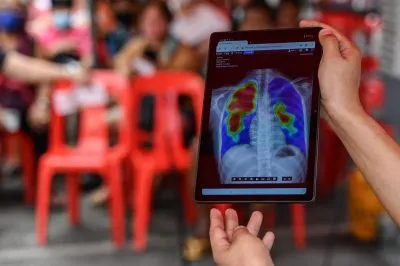Cities are the main sources of greenhouse gas emissions. Although they occupy only 2% of the world’s land area, they account for over 70% of emissions, according to the World Bank. Africa is becoming more urbanised, with younger populations increasingly moving from rural areas to cities to find work. As cities grow, new settlements are often built on land that is particularly vulnerable to climate risks, increasing the need for urban areas to be better adapted to climate change.
In September 2020, the World Bank and the European Investment Bank (EIB) launched the City Climate Finance Gap Fund, which aims to support the green and climate-resilient development of cities in low- and middle-income countries.
Through donor support, technical assistance, and targeted finance of at least €100m ($122m), the fund plans to unlock an estimated €4bn to help cities transform climate ambitions into finance-ready projects. Germany intends to invest around €40m and Luxembourg up to €10m.
Giulia Macagno, head of the City Climate Finance Gap Fund at the EIB, says that Germany’s environment ministry and the Global Covenant of Mayors – which represents the heads of more than 10,700 cities – saw a funding gap at the beginning of climate resilient projects for low- and middle-income countries.
“Many project preparation facilities support urban climate projects when they are in the advanced stages. The Gap Fund helps cities much earlier in the process. To overcome cities’ inexperience and lack of knowledge, the Gap Fund provides technical assistance that moves project ideas to more advanced planning stages and thus facilitates their implementation,” Macagno tells African Business.
Cities and local authorities are able to apply for Gap Fund support by submitting an expression of interest, and those with successful applications will receive technical assistance from the EIB or the World Bank. The first round of technical assistance grants for nine cities were approved in early April, amounting to $1.8m in total. The selected African cities include Kinshasa, Democratic Republic of Congo (DRC); Addis Ababa, Ethiopia; and Fez, Morocco. The second list of city projects will likely be announced in June, Macagno says.
Fez’s drought challenge
All of the three African pilot cities are particularly vulnerable to climate change. Over the last 50 years, droughts have intensified in Morocco’s arid climate, which houses thousands of square miles of the Sahara Desert. Since the beginning of the 1980s, recurrent droughts have impacted the hinterland of the northeast city of Fez.
The primary sector, including agriculture, employs 40% of the North African country’s workforce and contributes 15% of the country’s GDP, making Morocco particularly vulnerable to dry spells, according to the UN Office for Disaster Risk Reduction. When there’s a dearth of water in dams, farmers turn to overused aquifers near the Atlantic Ocean to irrigate their crops.
Augustin Maria, senior urban specialist at the World Bank, says his team will work with both the ministry of environment and municipality of Fez to make the city more climate resilient.
Morocco has 12 regions and the technical assistance would support the preparation of the territorial climate action plan for the region of Fez-Meknes, which includes the major urban areas of Fez, Meknes, and Taza.
The work will support Fez in developing the first city level climate action plan prepared by a Moroccan city. Fez’s action plan will include a city-level greenhouse gas emissions inventory, and the identification and priorisation of city-level actions for climate change mitigation and adaptation.
“As an example, potential low carbon investments typically include investments in urban transit, energy efficiency of public buildings, incentives for improving the energy efficiency of private buildings, or waste management,” says Maria.
Morocco already has several climate resilience projects in the pipeline. In February, the Moroccan minister of agriculture visited the coastal city of Agadir to view its new large desalination plant in development. It will be able to desalinate seawater for irrigation and municipal uses, relieving pressure on aquifers further inland.
Kinshasa’s floods
Kinshasa faces an entirely separate list of challenges. The capital city lies on the banks of the Congo River, which floods regularly during heavy equatorial rain. The city is heavily exposed to flooding and erosion, with landslides regularly claiming lives – one in November 2019 killed at least 40 people and displaced thousands more.
DRC’s exposure to climate change is worsened by extreme poverty, environmental degradation and low adaptive capacity to extreme weather events. Soil erosion can also hurt farmers in surrounding areas, leading to lower crop yields and the destruction of critical infrastructure.

The Gap Fund will help the city identify and prioritise investments in nature-based solutions and the “greening” of public buildings, spaces and street design to reduce emissions, enhance resilience and improve liveability in low income neighbourhoods.
“The technical assistance was requested by the Kinshasa city administration. The specific activities include data collection and mapping to help identify the opportunities in terms of investments in nature-based solutions. Once the identification is complete, there will be a preliminary assessment of the cost and impact of these investments in terms of greenhouse gas emissions reduction, flood risk reduction, cooling, increased quality of life, and job opportunities,” says Maria.
Planning ahead in Addis Ababa
In the Horn of Africa, Addis Ababa is exposed to heat waves, drought, and flash floods. Due to its undulating topography, poor waste management and the absence of sustainable storm water management, the Ethiopian capital is particularly vulnerable to climate change. Watercourses flow through the city, which during the rainy season can flood and damage settlements along the banks.
“The World Bank team has done a lot of work with Addis on improving the way that they look at capital investment planning. Capital investment planning is this whole process where you try to plan ahead in terms of needs to build new infrastructure, aligned with the special development plan for the city. They [Addis] need to maintain existing infrastructure and the idea is to bring this to the next level by integrating the climate dimension into this capital investment planning process,” Maria says.
“Then it’s really trying to use this to develop a pipeline of climate smart investments,” he adds.
Developing a pipeline of investments
In the first round of funding, the cities will build their greenhouse gas inventory scenarios and develop a pipeline of green urban infrastructure investments.
Maria says support from the Gap Fund does not involve any commitment from cities to take a loan from the EIB or the World Bank. Similarly, neither the EIB nor the World Bank commit to provide loans to a project that has received Gap Fund support.
“In general, by helping cities turn their climate ambitions into finance-ready projects, the Gap Fund is expected to provide financiers, including the EIB and the World Bank, more opportunities to increase their climate-finance flows towards cities,” says Maria.
“The World Bank has recently presented a new 2025 climate action plan which significantly increases the institution’s climate finance targets. Cities will play an important role, and the Gap Fund is one of the initiatives expected to contribute in achieving these increased targets.”
The EIB is also stepping up its investments in climate action, both inside and outside the EU. In November 2020, the Luxembourg-based bank approved a €1 trillion green investment package to be spent by 2030. As part of the pledge, from the start of 2021, all new EIB operations will be aligned with the Paris Agreement. In 2020 alone the bank provided €5bn for new private and public investment across Africa.
The team behind the Gap Fund hopes these city pilots will provide a blueprint on how to lower greenhouse gas emissions in cities and help them face climate change. There has been strong interest from African cities in the fund, Macagno says, and the institutions have been working with local officials to encourage more cities to apply for funding.
Macagno points out that many cities mentioned Covid-19 in their expressions of interest. “They are targeting climate projects but they are very much in line with this ‘build back better’ idea and they mentioned Covid as exposing some of the weaknesses of the municipalities, and they would like to react to that. That is a very positive sign.”
Want to continue reading? Subscribe today.
You've read all your free articles for this month! Subscribe now to enjoy full access to our content.
Digital Monthly
£8.00 / month
Receive full unlimited access to our articles, opinions, podcasts and more.
Digital Yearly
£70.00 / year
Our best value offer - save £26 and gain access to all of our digital content for an entire year!

 Sign in with Google
Sign in with Google 



